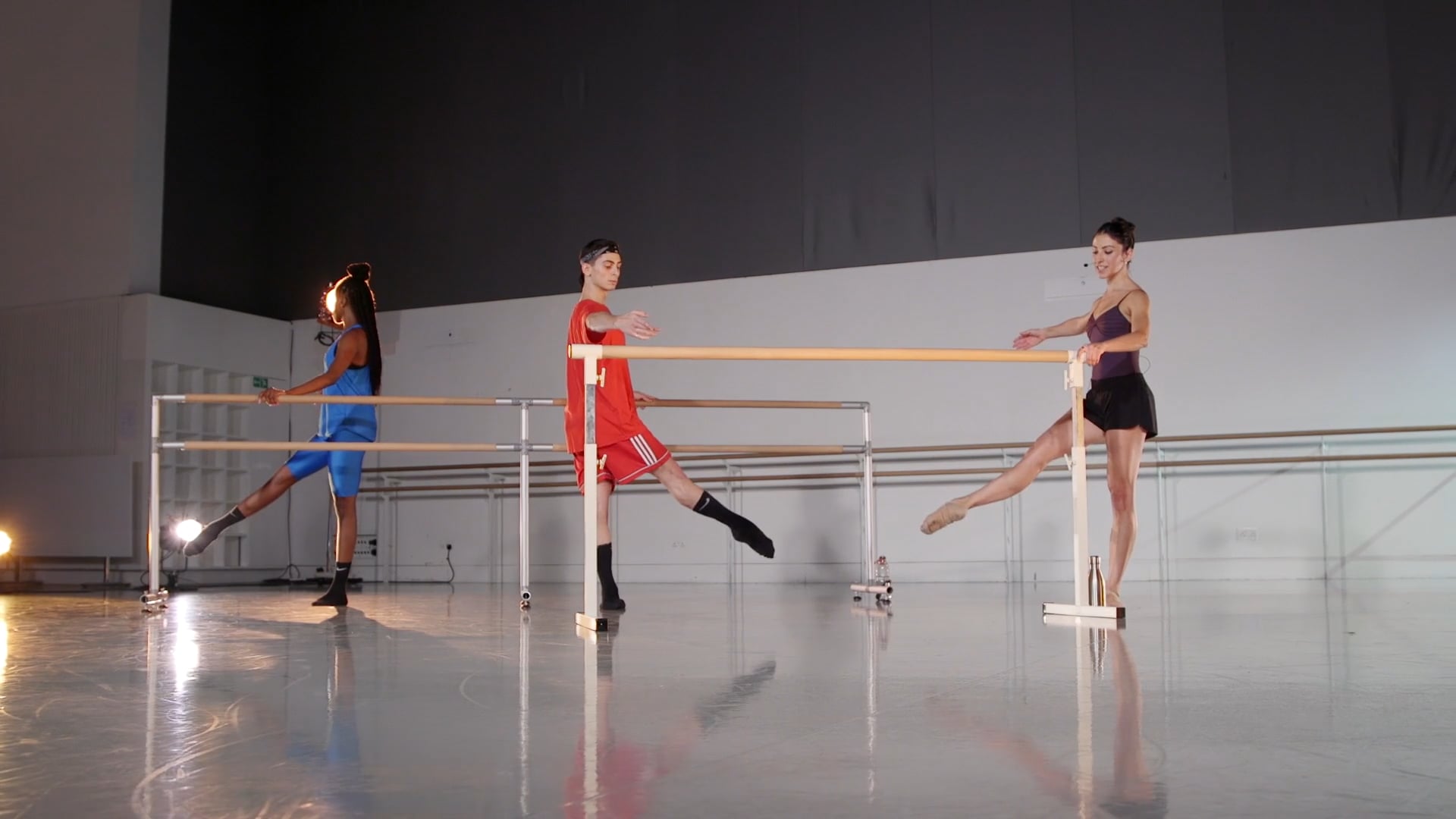The Best Ballet Moves for Beginners

Not taken a ballet class before? We’ve got you covered with the best and most common ballet moves for beginners.
On Rambert Plus, we have a wide range of classes to choose from, with a whole range of ballet classes led by our brilliant faculty of dancers and teachers. But if you’d like to know a bit more about what to expect first, or you just fancy learning more about the basic ballet moves that you’ll start with, read more below.
No matter if you’re in a studio or learning online, ballet classes typically follow the same format, which means you’ll learn a particular set of moves at the ‘barre’ (which means you’ll do these with one or two hands on a support of some sort – see here for how to make your own ballet barre at home), before building on these in the ‘centre’ (for this you’ll move away from your barre and do these in the centre of the room).
Ballet has a rich technique made up of many different positions and movements, so we’ve picked a few here to introduce you to the dance style and get you moving. As you’ll do a lot of the same moves in each class, you’ll get to practise these and build on what you’re learning in every session. And if you take these online with Rambert Plus, you can learn at your own pace alongside our Rambert dancers and teaching faculty, pausing and replaying whenever you need to.
Positions of the Feet
Not strictly a move, but the first thing you’ll do in any ballet class is learn to stand. In ballet there are 5 main positions of the feet, and in most beginner classes you’ll start in first position. You’ll have your heels together with your toes pointed out towards the side. To do this, your legs will need to turn outwards from the hips (not the knees). Take a look at our Beginner Ballet Class with Jacob who helps you find your true first position.
Pliés
Now that you know how to stand, the first actual move you’ll do in a ballet class is typically the plié. This is usually done at the barre (so if you’re at home, you’ll need your makeshift barre for this, as above). Plié literally means ‘to bend’, and that’s what you’re going to do: bend your knees and then straighten again. Sounds simple, but this is one of the key foundational moves of ballet and is how almost every ballet class begins. It will help warm the body up and get you ready for the next steps to come. Have a go at a plié in a class with Alex.
Tendus
Tendu means to stretch. This will typically be done at the barre, and you’ll stretch your foot out in front of you and then back again, while standing in first position. This is another important foundational movement which will get you ready for lots of other moves to come, like glissés and jetés. You can check out Hannah’s class on Rambert Plus, where she’ll talk you through how to get started with tendus.
Jeté
Jeté means to throw, so this is basically when your leg or legs are thrown away from you. If you’ve ever watched a ballet on stage, you likely would have seen a dancer leap across the stage at some point: this is a grand jeté. But this isn’t the only type of jeté – they come in many variations, can be big or small and can move in any direction. We can break the jeté down and practise this at the barre, as Brenda teaches in her class, with one leg at a time being thrown to the side (so like a tendu, but with the foot coming off the floor).
Sautés
Sauté means to jump, and there are many jumps in ballet. The easiest one to start with is jumping and landing on two feet. To do this, you can start in any position (let’s go with first, as we’ve talked about it already), and then plié (also see earlier), push off the floor and jump with legs extended and pointed toes. Land on the toes first, then through the feet and heels and straighten legs to finish. You can learn more about sautés at our class with Amy. Have a go at jumping at your own pace.
Eager to learn more? You can try out all of these moves on Rambert Plus in our range of ballet classes for all levels and abilities. Click here to sign up to a two week free trial, or sign in to get started.